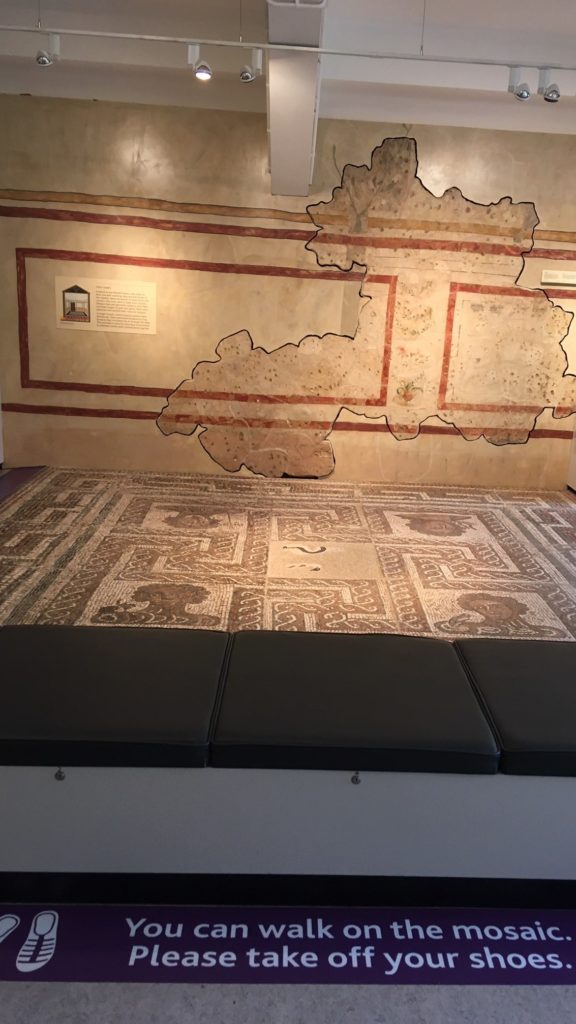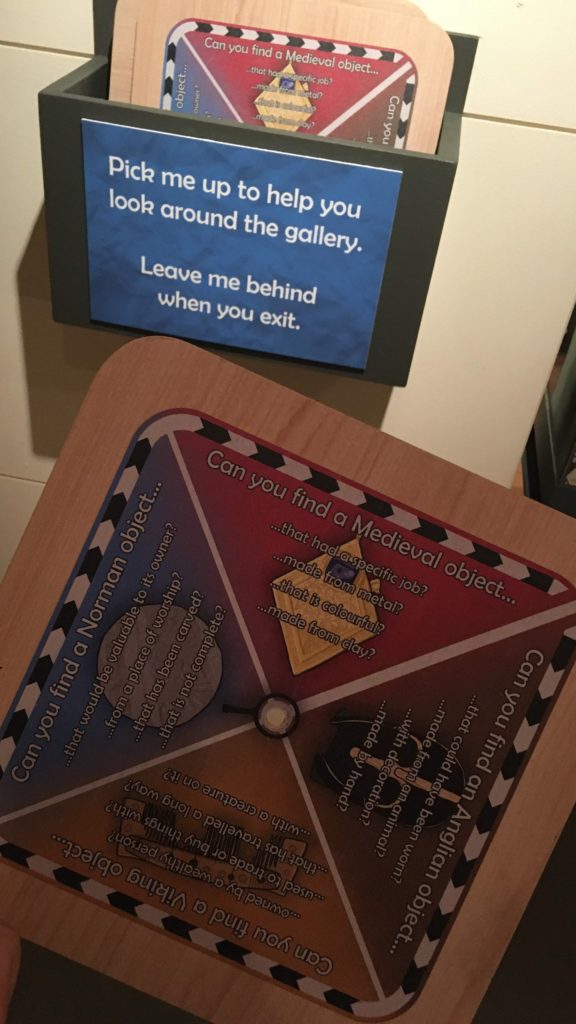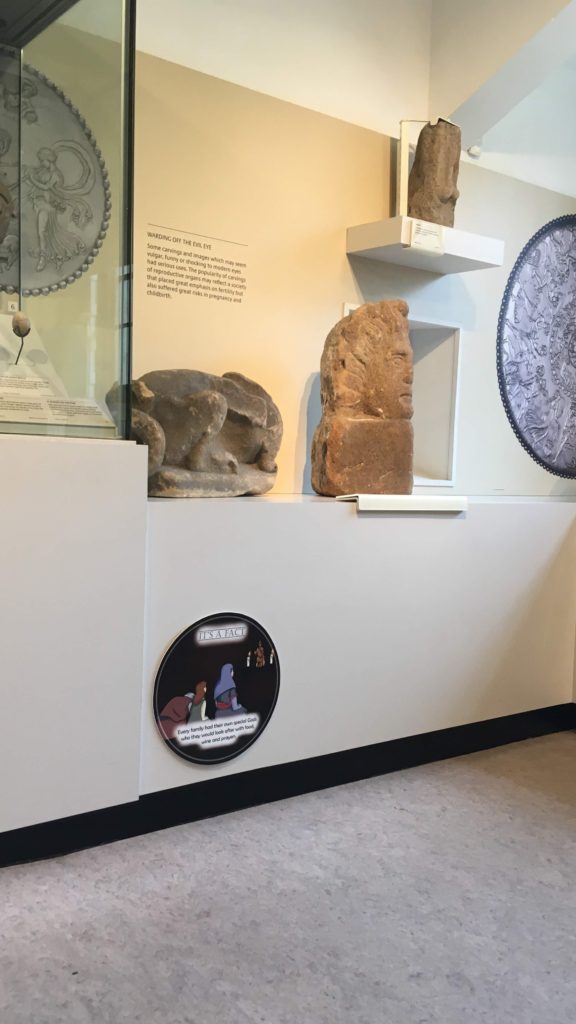The Yorkshire Museum showcases some of Britain’s finest archaeological treasures from the City of York’s Roman, Viking and medieval past. The Yorkshire Museum was opened in 1830 and in York’s Museum Gardens, amongst the ruins of St. Mary’s Abbey.
During my visit I found some examples of good practice that help visitors have confidence to participate and take ownership of their visit.
Confidence and ownership is one of our engagement reflection points, these are nine points that help us critically think about the experiences we offer through the eyes of our audience.
The Four Season’s Mosaic
 Getting to stand on the Four Season’s Mosaic, in the Roman York gallery, is a great and unique experience. The signage is very clear around the mosaic, it gives direct instructions on how to take part, inviting you to take off your shoes and walk across the mosaic. It shows you that you are allowed to interact and also how to do so. It made me feel welcome, giving me confidence to take part in the experience and got me to take more time over it. Having the interactive experience made me dig deeper and find out more about the mosaic. If I hadn’t had that opportunity I might have glanced at it and not spent so long delving into its different elements and the history behind them.
Getting to stand on the Four Season’s Mosaic, in the Roman York gallery, is a great and unique experience. The signage is very clear around the mosaic, it gives direct instructions on how to take part, inviting you to take off your shoes and walk across the mosaic. It shows you that you are allowed to interact and also how to do so. It made me feel welcome, giving me confidence to take part in the experience and got me to take more time over it. Having the interactive experience made me dig deeper and find out more about the mosaic. If I hadn’t had that opportunity I might have glanced at it and not spent so long delving into its different elements and the history behind them.
Activity plaque

One of the tools to get people exploring the gallery and taking a closer look at the objects was an activity plaque that can be taken around the Medieval York gallery. The plaque is like an object hunt providing questions that get you hunting objects that had different roles in history. It allows you to go around the gallery yourself whilst providing some structure to give you confidence to navigate your experience. This gives you ownership of your visit. It feels that they would really work for family groups as they provide an experience that the whole group can do together.
Facts trail

Throughout the museum there was a trail of circular plaques with interesting facts related to the objects and historic content spotted around the galleries. These plaques were placed at different heights depending on their content so that different age groups could access relevant facts and each age group had something for them. It was great to see that young children were not forgotten about and that appropriate heights and locations were considered as well as content level. This would help different visitors feel welcome in the museum and help orientate them.
Our engagement reflection points, can be used as a tool to aid development of, and/or, reflection on, any engagement experience. If you have some examples of good practice you’d like to share, get in touch!
In our ‘out and about‘ series we find examples of good science engagement practice whilst visiting other museums and centres.